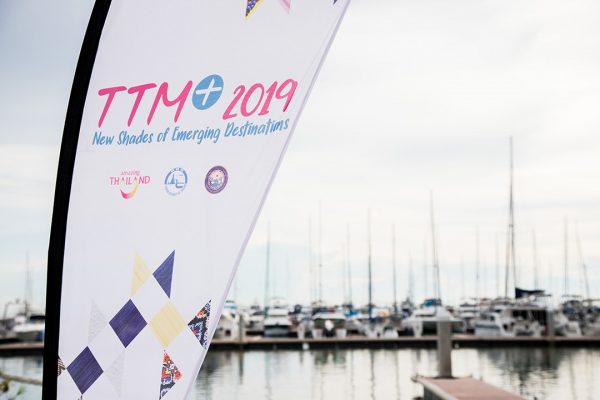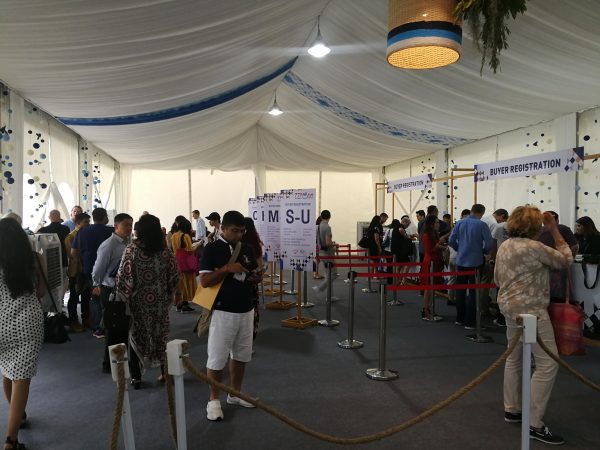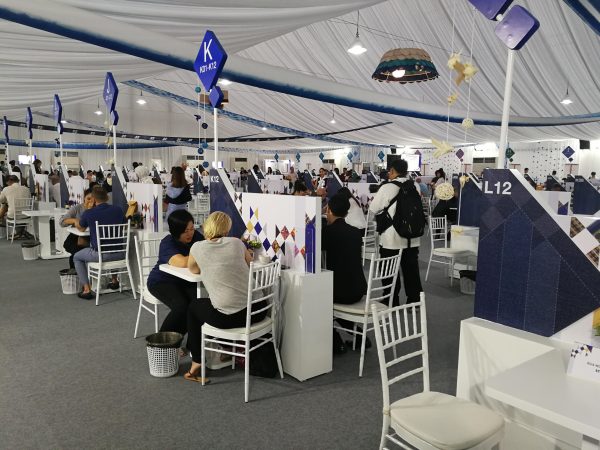PATTAYA, 11 June 2019: When the Tourism Authority of Thailand launched its latest campaign “New Shades of Emerging Destinations”, Pattaya was not in the frame.
This sprawling city by the sea happens to be Thailand’s second oldest beach resort after Hua Hin that stands on the west side of the Gulf of Thailand.
For decades, Pattaya weathered political storms and has survived an image-damaging onslaught depicting its unsavoury nightlife scene. All that might be about to change.

New shades can also apply to Pattaya as this seaside town readies to play a pivotal role in how tourism evolves in a coastal region the government calls the “eastern economic corridor”.
Last week, for the second year in a row the Tourism Authority of Thailand, hosted the national travel show, Thailand Tourism Mart, at Pattaya’s posh Ocean Marina.
Usually, a venue that greets you with the tinkling of rigging emitting from the marina’s yacht fleet at its mooring, the travel show delivered a constant chorus of business conversations. Business negotiations, hale and hearty greetings wafted on the breeze from the giant custom-built marque.

There was plenty to talk about. More than 350 international buyers toured the table presentations completing their appointments with 371 sellers many of them representing emerging destinations in Thailand.
But there is another story unfolding that will plot the journey Pattaya is now making one that should embrace new shades of meaning for its tourism. Redefining Pattaya’s role was one of the prevailing reasons why the TTM event moved to this coastal holiday town for two years in a row.
If all goes to plan, massive economic developments will transform the fortunes of towns and resorts along the eastern coast of the Gulf of Thailand.
Pattaya’s future prosperity is linked to a grand scheme to build a high-speed rail line linking three major airports in the central region; Suvarnabhumi and Don Mueang in Bangkok and U-tapao south of Pattaya near the Sattahip deep-sea port.

Incorporating the already successful Airport Rail Link between downtown Bangkok and Suvarnabumi airport, the high-speed trains will cover 220 km from the Don Mueang Airport in the northern suburbs of Bangkok to the coastal U-tapao airport, around 30 km beyond Pattaya.
Once operating in 2025, the high-speed trains will whisk travellers to Pattaya and U-tapao airport at speeds of around 200 kph and between the two Bangkok airports Suvarnambhumi and Don Mueang at slower, but respectable speed of 160 kph, high above the gridlocked streets of the capital. The entire three-airport rail link project will cost THB225 billion.
But the high-speed rail line is just one part of an even more ambitious project that will turn the region around Pattaya into a ‘smart’ industry zone linked to the country’s three major airports and deep-sea ports.
Pattaya’s future lies in an entirely different direction than low-cost holidays or mass tourism according to the Eastern Economic Corridor Office that manages the massive projects that will transform the region.
Handed the responsibility for developing and managing the corridor, EECO is wooing what it calls new S-Curve industries such as robotics, aviation and logistics, biofuels and biochemical, digital and integrated medicine. These industries will be developed across an area within 30 to 50 km of Pattaya. Most of the industries will be part of a massive export park named U-tapao Aviation City, developed at a cost of THB290 billion.
Pattaya will emerge as a major MICE destination (meetings, incentives, conventions and exhibitions) once these industries are established.
Industries will need to host product launches and conferences as projects put down roots on the eastern seaboard. Driven by convenient access from three airports the city by the sea with its vast hotel room inventory is destined to become a popular venue for events and exhibitions.
Top projects have been clearly identified by the EECO. They include the U-tapao Airport and Eastern Aviation City Project on 6,500 rai of land located in Ban Chang District, the Laem Chabang Port Project Phase III in Si Racha District, Chonburi Province (THB84 billion) Map Ta Phut seaport (THB47 billion) and the U-tapao Aircraft Maintenance Centre Project an area of 210 rai within the airport complex near Sattahip. This project alone will require an investment of THB11.6 billion.
Whether you call it new shades or a new chapter, Pattaya has an opportunity to re-invent itself to become a premier business and sports event venue generating billions in MICE revenue. Yes, the city by the sea must build sports stadiums and draw international events, possibly even establishing its own convention bureau if it is to successfully redefine its role in tourism.
As the TAT governor Yuthasak Supason pointed out during the TTM: “It would be fair to say that the Thai tourism industry is on the cusp of a new era.”
Will that new era by-pass Pattaya or will the developments across the eastern seaboard spell a better future for one of Thailand’s oldest seaside towns?
Pattaya needs to look beyond mass tourism to see the benefits and revenue that ‘smart” industries will ultimately deliver. More corporate bookings, mega sports events and product launches will reimagine the city’s profile and raise the value of its real estate. Business travellers attracted by the convenience of a three-airport high-speed train line will ultimately turn Pattaya into a competitive venue for corporate events. They are the new shades that would make for a smart Pattaya.






